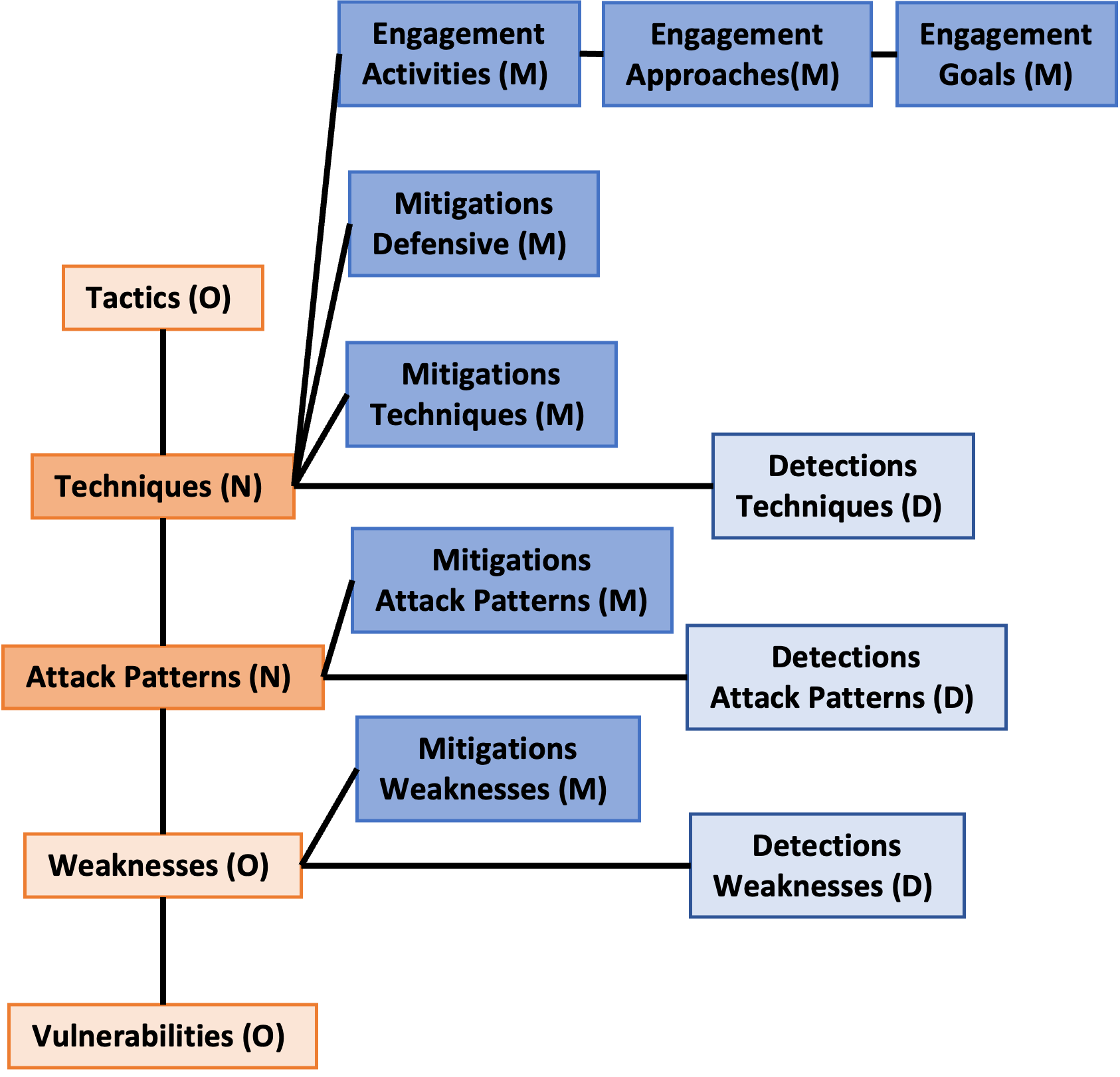BRON - Link and evaluate public threat and mitigation data for Cyber Hunting
Threat data from MITRE ATT&CK, CAPEC, CWE , CVE, MITRE Engage and MITRE D3FEND data sources are linked together in a graph called BRON. The data types are linked with bidirectional edges. Orange nodes in figure have "offensive" information. Blue nodes in figure are "defensive" information.
Website: bron.alfa.csail.mit.edu/info.html
Deployment
See graph_db for a public instance of graph data base implementaion bron.alfa.csail.mit.edu
Pre-requisites:
- Docker (installing Docker)
- Docker Compose (installing Compose)
To deploy BRON on top of ArangoDB, clone this repository and run:
docker-compose up -d
The deployment starts two containers:
brondb: an ArangoDB server hosting the BRON graph and collectionsbootstrap: an ephemeral container that builds BRON and loads it into the graph database
It may take a few minutes for the bootstrap to conclude. It will download and analyze the required datasets, build BRON, and import it into the database. You can check its completion by monitoring the bootstrap container logs.
docker logs -f bootstrap
To access the graph database console, point your browser to http://localhost:8529, login, and select BRON as database.
Note: this deployment uses docker secrets for setting the database password; its value can be changed in
./graph_db/arango_root_password.
Programmatic APIs Installation
Python version > = 3.8
Pip
- Create a
pipenvironment
python3 -m venv bron_venv
source ./bron_venv/bin/activate
pip install -r requirements.txt
Getting Started
Build BRON on localhost (requires an arangodb installation)
PYTHONPATH=. python tutorials/build_bron.py --username root --password $(cat arango_root_password) --ip 127.0.0.1
tail -n 1 build_bron.log
This should produce a build_bron.log file that ends with END building BRON.
Tutorials
Tutorials are available in the tutorials folder on the following topics:
- Using BRON in Arangodb,
tutorials/using_bron_graphdb.py - Building a text corpus based on BRON,
tutorials/build_bron_corpus.ipynb
Usage
usage: build_bron.py [-h] --username USERNAME --password PASSWORD --ip IP [--clean] [--clean_local_files] [--delete_mitigations] [--no_download] [--no_parsing] [--no_building] [--no_arangodb]
[--no_mitigations] [--no_validation]
Build BRON in Arango DB
optional arguments:
-h, --help show this help message and exit
--username USERNAME DB username
--password PASSWORD DB password
--ip IP DB IP address
--clean Clean all files and db
--clean_local_files Clean all local files
--delete_mitigations Clean all mitigation collections
--no_download Do not download data
--no_parsing Do not parse data
--no_building Do not build BRON
--no_arangodb Do not create and import to Arangodb
--no_mitigations Do not create and import mitigations
--no_validation Do not validate entries imported to the ArangoDb
Structure of BRON
See graph_db/schemas
Bibliography
arXiv report: https://arxiv.org/abs/2010.00533
@misc{hemberg2021linking,
title={Linking Threat Tactics, Techniques, and Patterns with Defensive Weaknesses, Vulnerabilities and Affected Platform Configurations for Cyber Hunting},
author={Erik Hemberg and Jonathan Kelly and Michal Shlapentokh-Rothman and Bryn Reinstadler and Katherine Xu and Nick Rutar and Una-May O'Reilly},
year={2021},
eprint={2010.00533},
archivePrefix={arXiv},
primaryClass={cs.CR}
}
